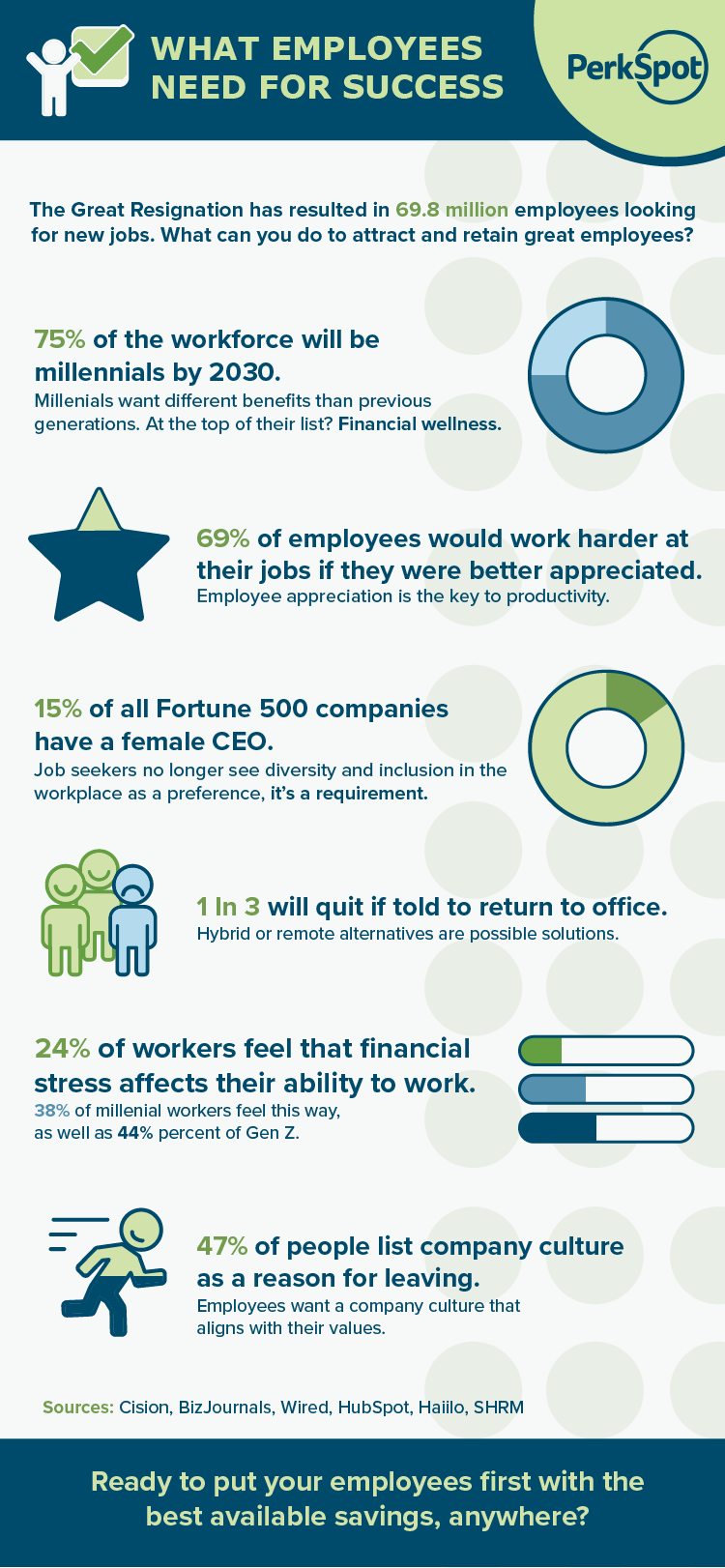4 Reasons Behind High Turnover Rates (And How to Solve Them)
What does a business need to be successful? Some would say producing best in class, appealing products; others would say top quality customer service. Both factors are undeniably necessary, but for bigger businesses, there’s one metric of success that’s even more important: your employees. And just anyone’s butt in the chair won’t cut it. At the top levels, you need hard-working, committed staff that will help you advance your goals. Feel like you’ve got a fantastic team? Great – but there is another challenge that you’ll need to overcome. If you’ve got the best staff, you want to ensure they stick around, which means keeping turnover down.
If your voluntary turnover is high, it shows that staff aren’t happy with their working situation. There are lots of reasons why you’d want to keep voluntary turnover on the decline – for one, the cost of replacing an employee ranges from one-half to two times the employee’s salary. But how can you keep turnover levels low? The following four steps will help you keep your workers happy and content.

Image sourced from Quantumworkplace.com
1. Poor Management
Looking for one of the top causes of workers leaving their jobs? You’d be hard pushed to beat poor management. The best team leaders can inspire their teams to work harder while utilizing the unique skills of different members. The worst leaders do the opposite.
You might want to consider new leadership if you’re encountering the following issues:
- Unmotivated employees
- Lack of cohesion between teams
- Burnt out employees.
- Leaders setting poor standards
These are just a few examples of bad management. These practices will only cause you harm and do little to help you retain employees. Don’t underestimate the importance of leadership in the workplace. If your current leaders aren’t up to scratch, find new ones.
2. Not Enough Opportunities for Progression
Most people don’t take on a job to stay in the same position forever. Employees want to advance and grow in their careers. If workers feel they aren’t getting enough opportunities to progress, they’ll turn over to go elsewhere. Instead, you’ll want staff to feel they have a clear path to climbing the career ladder. You could consider a talent management strategy.
It means creating a culture of development. In other words, the idea of development and progression should be an intrinsic part of your organization. Try to offer continuous education throughout every layer of your business. Even those at the top still have room to learn more. Those at the bottom will be keen to grow their skill sets and advance. So for their sakes, it’s best to make learning materials easy to access, mobile or otherwise!
3. Hiring Externally

Image sourced from Unsplash
One pitfall a lot of businesses fall into is only offering high-level roles externally. There’s a clear logic to hiring externally; you can choose from a larger pool of candidates. But reliance on external recruitment can have a major impact on employee morale, especially for critical mid-level managerial and executive positions; morale impacts that translate directly into higher turnover.
Put yourselves in the shoes of an employee for a moment. You’ve devoted long hours and shown commitment to your organization. But when the opportunity for a promotion crops up, you’re overlooked in favor of an external hire. In this instance, you probably won’t want to stick around much longer.
Ultimately, if employees are putting in the effort, they should have the opportunity for a promotion.
4. Recognize Your Employees
A little recognition goes a long way. A contributing factor to high turnover rates is a failure to show appreciation for the efforts of your workers. Obviously, you don’t want to be gushing praise constantly. But when teams or individual workers do well, you should let them know.
Recognition can take many forms. It could mean setting up an employee of the month scheme. Using a conference calling system, you can announce each month’s winner in front of the team. This is a great way of showing recognition while building a healthy sense of rivalry between teams.
If you want to go the extra step, you could set up a discount program for the highest performers. The more recognition and feedback you offer to your employees, the more valued they will feel.
Employee Satisfaction Is Key

Image sourced from Unsplash
There are some areas in business that are just common sense – like retaining good employees.
Some employee turnover is natural. People don’t stay in the same position forever; they eventually move on to new opportunities. But if voluntary turnover levels are high, you should be more worried. If your organization isn’t providing a positive environment for your workers, it reflects badly on you.
Start by asking yourself, ‘why are people leaving?’. Is there a problem with management, or perhaps you’re failing to provide a route for your employees to progress? You can’t just click your fingers and make your workers happy. As shown here, retaining workers takes commitment.
But if you look to the roots of the problem and work to find a solution, you’ll foster a much happier workforce. So, make sure you’ve on top of your turnover rate!
This contributor post was written by Jenna Bunnell – Senior Content Marketing Manager at Dialpad.
Dialpad is an AI-incorporated cloud-hosted call center platforms that provides valuable call details for business owners and sales representatives. Jenna is driven and passionate about communicating a brand’s design sensibility and visualizing how content can be presented in creative and comprehensive ways. Jenna Bunnell also published articles for domains such as SME News and Together Platform.






 Discount science is an understudied topic, but we think it’s an important one! From keeping employees’ happy to saving them valuable time and money, the evidence is clear.
Discount science is an understudied topic, but we think it’s an important one! From keeping employees’ happy to saving them valuable time and money, the evidence is clear. 





